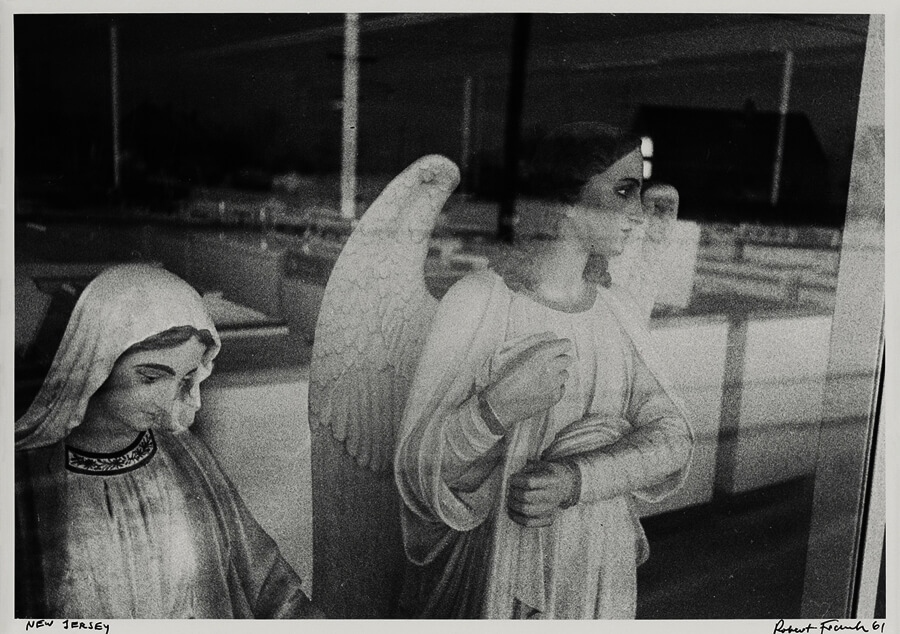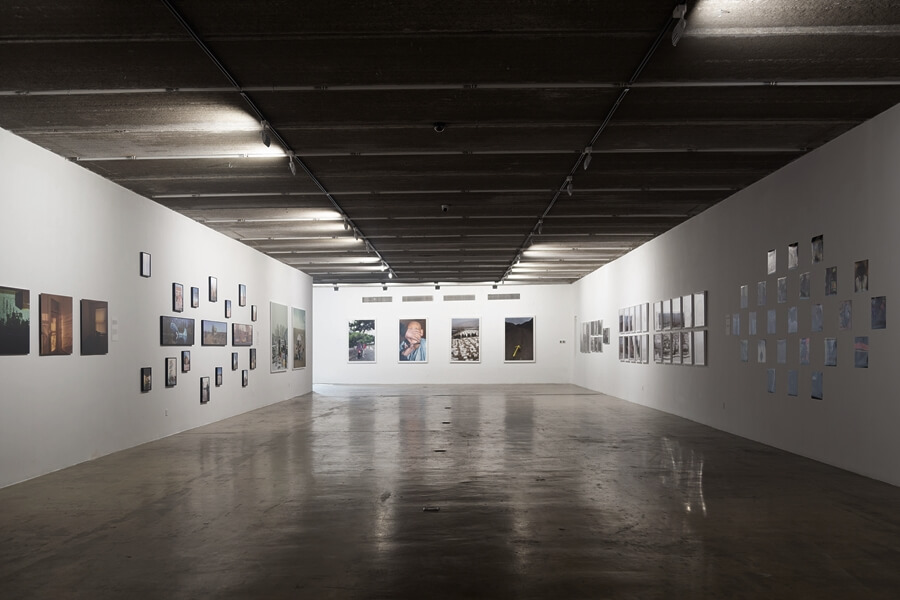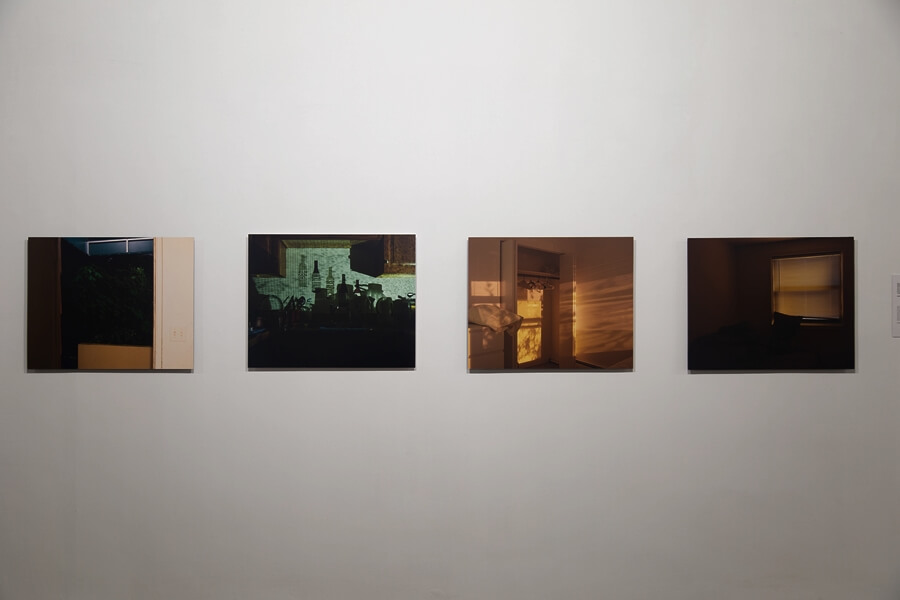
“Robert Frank, New Jersey, 1961. From the collection of Charles Jin. Courtesy the artists and Three Shadows Photography Art Centre”
Jonathan Green described the American photography in 1950s as the beginning of the contemporary photography and mentioned three events as his reasoning. First is the publication of “Aperture” in 1952, second is the exhibition “The Family of Man” at MoMA in 1955, and the last one is the publication of Robert Frank’s “The Americans” in 1958.1)
As you can see from this appraisal, Robert Frank is the photographer who went down in the history of the contemporary photography. His book, “Americans”, is a personal documentary taken through the road trip between 1955 and 1956 with the grant of Guggenheim Fellowship. It was published first in France, and then published in the US following year. At that time, his images were criticized as un-aesthetic because these were far from the traditional rules of photography. According to the images listed in “The Americans” from Steidl (2008), framing, exposure, and focus - none of them followed the common rules. I could be convinced why his images were under harsh criticism. In those days, the credo that dominated photography was the “decisive moment” of Henri Cartier-Bresson.

“Installation view. Courtesy the artists and Three Shadows Photography Art Centre”
However, a more important reason that caused criticism might be negative feelings that his photos implied. “The Americans”, which were full of the icons that represents the identity of the America2), exposed the dark sides of the country such as “racism, (pariah) capitalism, Christianity prioritization, and nationalism”3) with critical eyes. These images hurt the pride of the America, the country which became the world’s strongest nation through the two World Wars. Frank said that he tried to stand as an observer during the trip. He focused only on work, kept his mouth shut, and drew little attention from other people.4) His words made me imagine where he stood on that trip. Probably, this approach allowed him to capture the moments overlooked by Americans.

“Works of Robert Frank. Courtesy the artists and Three Shadows Photography Art Centre”
Some people interpret “The Americans” as the gloomy scenes of the US captured with the eyes of European. However, Frank told the biggest impact on his work was not his Swiss background, but the America itself. (“My background never came into play. It was the uniqueness of America that came into play,”)5) I think the social landscapes of the country passing through the decade of prosperity inspired the artist.
Robert Frank was a genius ahead of the ages in some way. He made many innovative films as well as photography. And after he started again taking photos in 70’s, he created unique images such as diptych, triptych and text-inscribed photos. When he died in 2019 at his home in Nova Scotia, Canada, many global medias posted his obituary to mourn the legend of the contemporary photography.

“Installation view. Courtesy the artists and Three Shadows Photography Art Centre”
The exhibition, at Three Shadows Photography Art Centre, is the same one displayed during the 2020 Jimei x Arles International Photo Festival6) in Xiamen, China. The show in Beijing divided in two sections. The first floor shows the world of Robert Frank’s art, and the second floor exhibits the works of thirteen Chinese artists (12 photogs + 1 duo exactly) directly or indirectly influenced by Frank. About 10 vintage prints of Robert Frank are hang including the private collection of Rongrong, the founder of the Centre. One of these works is the constructed photo from late 70’s. And 1-hour long video showing the twelve books of Frank is played together. Through these various material, the show let us see his works from a broad perspective.
The images on the second floor that caught my eyes were the “Route 66” of Zeng Han and the New Haven work by Ronghui Chen. In 2008, Zeng Han had a road trip from Chicago to LA through the route 66, which was forgotten long-time ago. For him, who is “a maniac photographer of ruins”, this trip was a time to meet the paradise of images. Zeng Han became a spectator on the road which meant a “true-freedom” to America’s young generations half a century ago. He became the spectator inevitably because he came through the space - different continents, and the time - decades. This is why the trip of Robert Frank overlapped with the one of Zeng Han.

“Zeng Hang, 2008. From the Route 66 series. Courtesy the artists and Three Shadows Photography Art Centre”
Ronghui Chen began his MFA at Yale, granting from Frank Foundation. When he got to New Haven in 2019, many people (even police offices) warned him not to wander after dark. Thus he came back home everyday in a hurry before it got dark and lied down without doing anything. At that time, the scenes made by pale light attracted his eyes. It recalled his young days in rural area of China, where there was little light during night time and he had to be accustomed to that environment.
This is why he began to take pictures of the evenings in New Haven. For the part I in 2019, he made a long-exposure image lean on dim light from outside only. Then for the part II in 2020, he took one step forward. Literally speaking, he brought the streets outside the window into his room using a pin-hole and then captured images which in and out were overlapped each other.

“Ronghui Chen, An Ordinary Evening in New Haven series, 2019. Courtesy the artists and Three Shadows Photography Art Centre”
As the curator Jin Mu said on the introduction of the exhibition, it’s not that long that the photographer Robert Frank was introduced to China. After China adopted the “Gaige Kaifang” policy from 1978, information about western photographers came in. However, it was fragmentary or even wrong sometimes. It is 2000’s that a proper analysis and understanding about Robert Frank is achieved in China. In 2007, he attended the Pingyao International Photo Festival, and the Chinese version of from Steidl was published in 2008.(7)
Then what do Robert Frank and these thirteen artists have in common? Maybe, it is that they resonated with their times as photographers. It is the same to the artists who began photography before they knew Frank, and to the young photographers influenced directly by Frank’s photos. Their works are the result of the “immanent resonation” (8).
This resonation come from the relationships between them and their ages or between them and Robert Frank(’s images). Frank said photographers should keep eyes open and take a risk (for work). Like what he said, the thirteen artists joined the exhibition do their best to capture the world on their own eyes. This is the reason that the their works become a tribute to the genius ahead of the times.